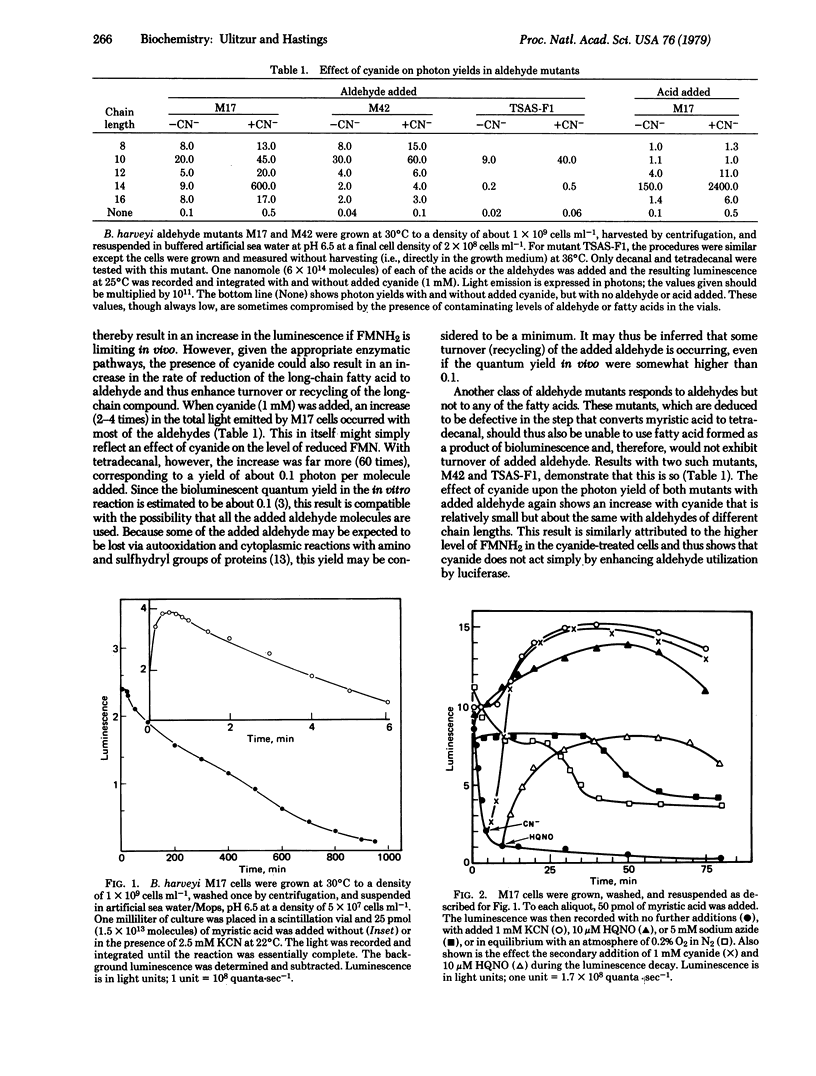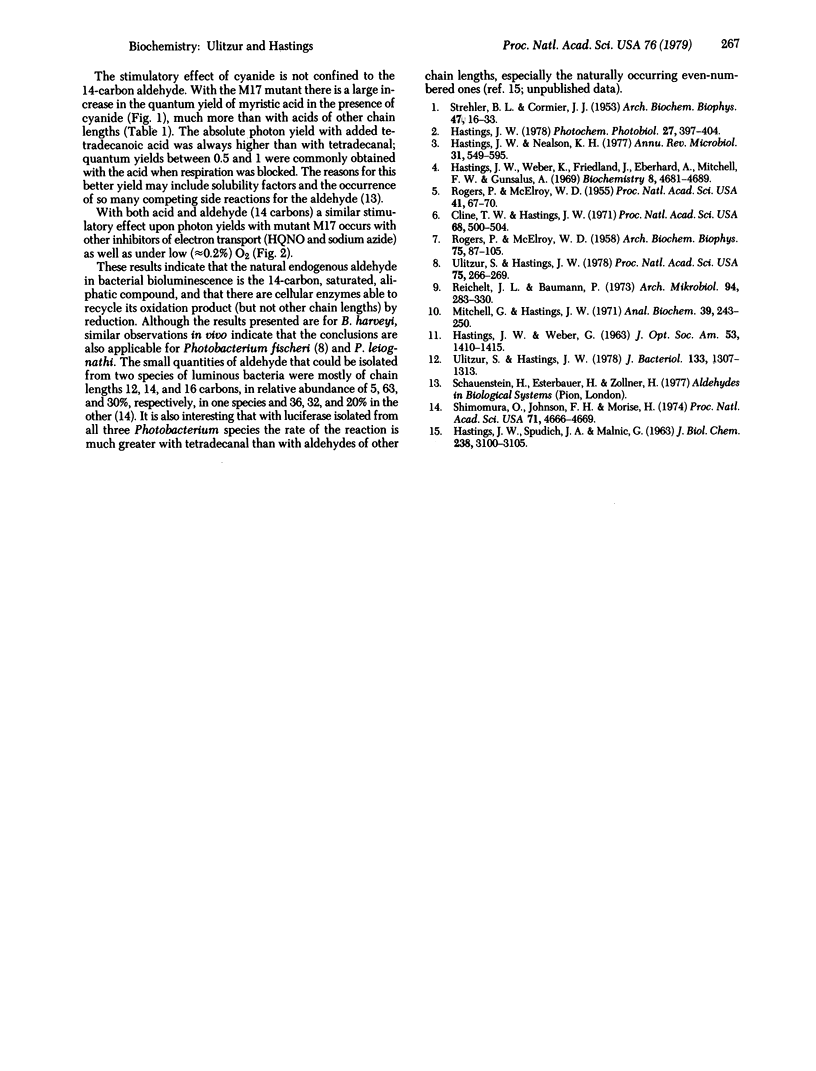Abstract
Dim aldehyde mutants of the luminous bacterium Beneckea harveyi emit light with exogenously added long-chain aliphatic aldehyde. In one class of these mutants, luminescence is also stimulated by myristic (tetradecanoic) acid. In such mutants the amount of light obtained by the addition of a small (limiting) amount of either tetradecanal or myristic acid may be increased 60-fold by cyanide and other agents that block respiration. This indicates that the fatty acid product of the luminescent reaction is recycled. The effect, like the stimulation by exogenous fatty acid, exhibits specificity for the 14-carbon compound, suggesting that tetradecanal is the natural aldehyde. In those aldehyde mutants that are not stimulated to emit light by fatty acids, and thus presumably lack the recycling system, the chain-length-specific stimulation by cyanide does not occur.
Full text
PDF


Selected References
These references are in PubMed. This may not be the complete list of references from this article.
- Cline T., Hastings J. W. Temperature-sensitive mutants of bioluminescent bacteria. Proc Natl Acad Sci U S A. 1971 Feb;68(2):500–504. doi: 10.1073/pnas.68.2.500. [DOI] [PMC free article] [PubMed] [Google Scholar]
- HASTINGS J. W., SPUDICH J., MALNIC G. THE INFLUENCE OF ALDEHYDE CHAIN LENGTH UPON THE RELATIVE QUANTUM YIELD OF THE BIOLUMINESCENT REACTION OF ACHROMOBACTER FISCHERI. J Biol Chem. 1963 Sep;238:3100–3105. [PubMed] [Google Scholar]
- Hastings J. W., Nealson K. H. Bacterial bioluminescence. Annu Rev Microbiol. 1977;31:549–595. doi: 10.1146/annurev.mi.31.100177.003001. [DOI] [PubMed] [Google Scholar]
- Hastings J. W., Weber K., Friedland J., Eberhard A., Mitchell G. W., Gunsalus A. Structurally distinct bacterial luciferases. Biochemistry. 1969 Dec;8(12):4681–4689. doi: 10.1021/bi00840a004. [DOI] [PubMed] [Google Scholar]
- Mitchell G. W., Hastings J. W. A stable, inexpensive, solid-state photomultiplier photometer. Anal Biochem. 1971 Jan;39(1):243–250. doi: 10.1016/0003-2697(71)90481-7. [DOI] [PubMed] [Google Scholar]
- ROGERS P., McELROY W. D. Enzymic determination of aldehyde permeability in luminous bacteria. I. Effect of chain length on light emission and penetration. Arch Biochem Biophys. 1958 May;75(1):87–105. doi: 10.1016/0003-9861(58)90400-4. [DOI] [PubMed] [Google Scholar]
- Rogers P., McElroy W. D. BIOCHEMICAL CHARACTERISTICS OF ALDEHYDE AND LUCIFERASE MUTANTS OF LUMINOUS BACTERIA. Proc Natl Acad Sci U S A. 1955 Feb 15;41(2):67–70. doi: 10.1073/pnas.41.2.67. [DOI] [PMC free article] [PubMed] [Google Scholar]
- Shimomura O., Johnson F. H., Morise H. The aldehyde content of luminous bacteria and of an "aldehydeless" dark mutant. Proc Natl Acad Sci U S A. 1974 Dec;71(12):4666–4669. doi: 10.1073/pnas.71.12.4666. [DOI] [PMC free article] [PubMed] [Google Scholar]
- Ulitzur S., Hastings J. W. Growth, luminescence, respiration, and the ATP pool during autoinduction in Beneckea harveyi. J Bacteriol. 1978 Mar;133(3):1307–1313. doi: 10.1128/jb.133.3.1307-1313.1978. [DOI] [PMC free article] [PubMed] [Google Scholar]
- Ulitzur S., Hastings J. W. Myristic acid stimulation of bacterial bioluminescence in "aldehyde" mutants. Proc Natl Acad Sci U S A. 1978 Jan;75(1):266–269. doi: 10.1073/pnas.75.1.266. [DOI] [PMC free article] [PubMed] [Google Scholar]


